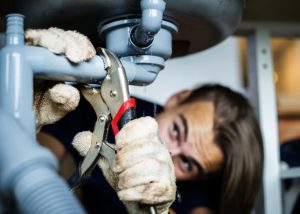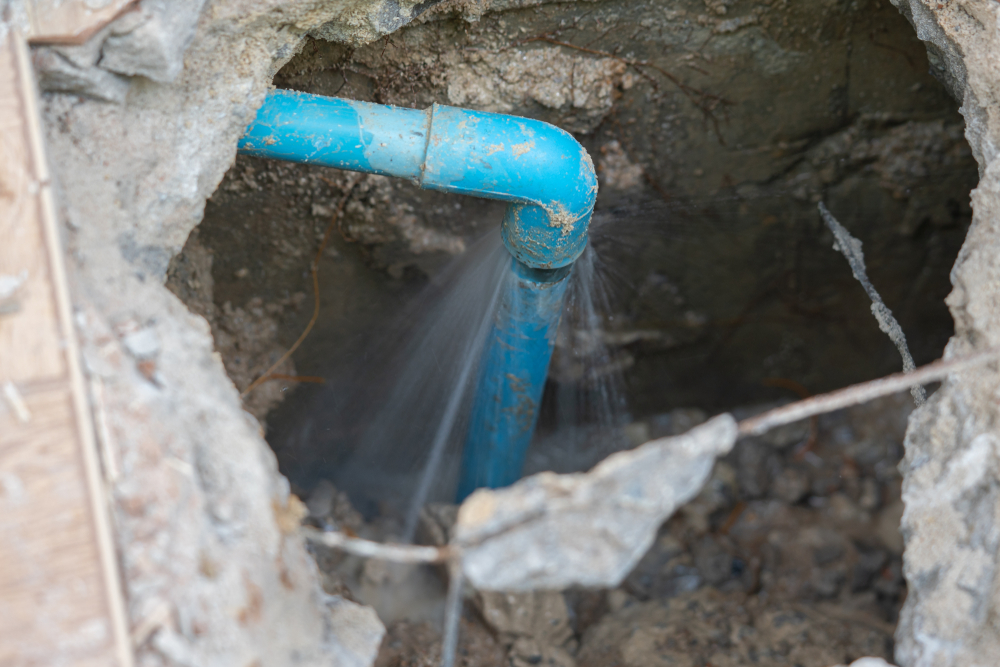Overview To Water Leak Detection At Home
Overview To Water Leak Detection At Home
Blog Article
We have stumbled on the article involving Leaking water lines listed below on the web and thought it made good sense to write about it with you on my blog.

Early discovery of dripping water lines can minimize a potential disaster. Some small water leakages might not be noticeable.
1. Check Out the Water Meter
Every house has a water meter. Checking it is a proven manner in which aids you uncover leaks. For starters, turn off all the water sources. Guarantee nobody will flush, utilize the tap, shower, run the washing device or dishwashing machine. From there, most likely to the meter as well as watch if it will certainly alter. Considering that nobody is using it, there ought to be no activities. If it moves, that suggests a fast-moving leakage. If you identify no adjustments, wait a hr or 2 and check back again. This suggests you might have a sluggish leak that could also be below ground.
2. Check Water Consumption
Analyze your water expenses and also track your water intake. As the one paying it, you ought to notice if there are any kind of disparities. If you identify sudden changes, despite your intake being the same, it means that you have leakages in your plumbing system. Keep in mind, your water bill must drop under the exact same range on a monthly basis. An unexpected spike in your bill shows a fast-moving leak.
A stable increase every month, also with the exact same routines, reveals you have a sluggish leakage that's also slowly rising. Call a plumber to thoroughly inspect your home, especially if you feel a warm location on your floor with piping beneath.
3. Do a Food Coloring Examination
When it comes to water intake, 30% comes from commodes. If the shade in some way infiltrates your dish during that time without flushing, there's a leak in between the container and also dish.
4. Asses Outside Lines
Do not fail to remember to check your exterior water lines also. Must water seep out of the link, you have a loosened rubber gasket. One small leakage can lose lots of water and increase your water costs.
5. Check and also Examine the Scenario
Homeowners need to make it a routine to inspect under the sink counters and also even inside cabinets for any kind of bad odor or mold development. These two warnings suggest a leakage so timely focus is needed. Doing routine examinations, even bi-annually, can conserve you from a major trouble.
Check for discolorations and also damaging as many pipelines and also home appliances have a life expectancy. If you presume dripping water lines in your plumbing system, do not wait for it to intensify.
Early discovery of leaking water lines can reduce a potential calamity. Some little water leaks may not be noticeable. Examining it is a guaranteed means that aids you discover leaks. One little leakage can throw away bunches of water and surge your water bill.
If you presume leaking water lines in your plumbing system, do not wait for it to escalate.
How to Know If Your Home Has a Hidden Leak
Water Meter Reveals Inexplicable Water Usage
If you’d like to test whether or not there’s a leak somewhere in your home, you can do this using your water meter. Here is how to conduct the test:
Don’t use any water in your home for at least 30 minutes; this also means not turning on faucets or water-using appliances.
Go outside, and check your water meter for activity.
If your water meter shows that there was activity, even though no one was using any water, this proves that there is a leak in your home.Visible Mold or Mildew Growth
Leaks behind walls create moist, dark environments that allow mold and mildew to grow and thrive. Eventually, you might see mold growth forming on the wall closest to a hidden leak.
If mold is growing in an area that receives a high amount of moisture, such as a bathroom, it may simply be an indication that better ventilation is needed. However, if you see mold growth on a wall or the ceiling in an area where you would not expect, you probably have a hidden leak.
Musty, Mildew Odor
Sometimes you might not be able to see the mold or mildew that is growing as a result of a leak. However, the smell can give the problem away just as easily. If you catch a whiff of something musty, there’s a good chance that old water is collecting somewhere in your home that you can’t see.
Stained/Warped Walls, Ceilings, or Floors
When your home soaks up water, a variety of red flags can become visible, including ceiling stains, bubbling drywall, warped walls, and sagging floors. While these issues can be caused by excess humidity, they can also be signs that a pipe or plumbing connection has started leaking behind your walls.
Inexplicably High Water Bill
After a while, you get a general sense for what your water bill should be. If you own a pool or sprinkler system, your bill will tend to be higher during summer. However, if you receive a water bill that seems especially high, and you can’t figure out what caused it, then you may have a hidden leak somewhere that’s increasing your bill.
https://www.plumbingjoint.com/blog/2019/july/how-to-know-if-your-home-has-a-hidden-leak/

Hopefully you enjoyed our post about Detecting hidden plumbing leaks. Thanks a ton for taking time to read through our blog. Appreciated our post? Please share it. Help someone else discover it. We take joy in reading our article about Hacks to detect leaks.
Report this page